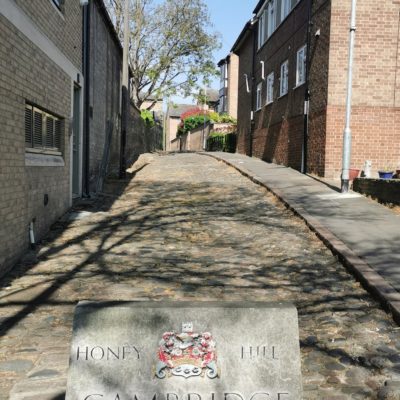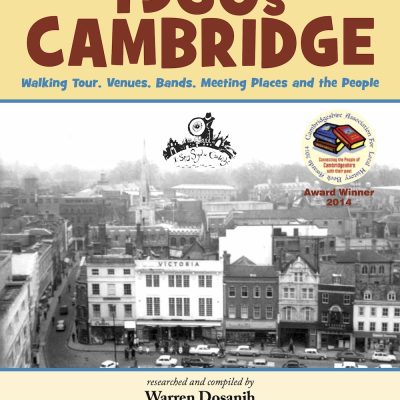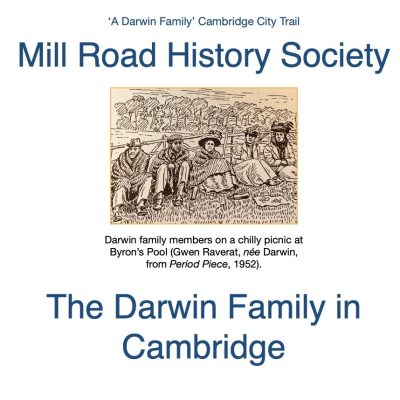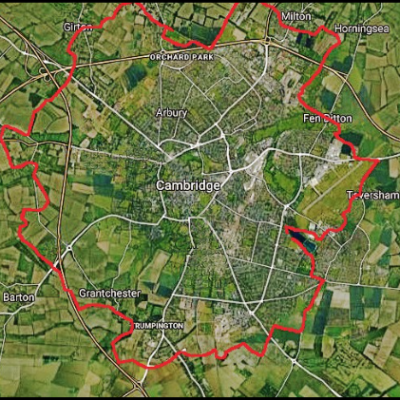Search by topic
- archaeology
- Building of Local Interest
- chapel
- charity
- church
- crime
- dressmaker
- fire
- Great Eastern Railway
- Listed building
- Mapping Relief
- medieval
- oral history
- poverty
- Public House
- Religious House
- Roman
- scholar
- school
- Then and Now
- tudor
- women
- work
- world war one
- world war two
Search by text
Cambridge WWI Virtual Medical Trail
A list of WWI medical locations in Cambridge
This virtual tour takes the visitor to locations where many of those who were involved in medicine devoted to treatment of wounded servicemen in World War One, lived and worked. Many thousands of people in Cambridge had a wide range of roles during the Great War; most of these will have known servicemen who lost their lives or returned home severely physically or mentally traumatised.
The entries on CapturingCambridge.org contain many links to further websites and sources of detailed information on these topics.
First Eastern General Hospital
Binsted, Herschel Road – James Hamilton Doggart – admiralty surgeon
Edgar Douglas Adrian – treated shell shock at St Bart’s in London. He was 1932 Nobel Prize winner for medicine and came to live at St Chad’s before WWII. St Chad’s house was a Red Cross Auxiliary Hospital in WWI
Harold Gillies was a New Zealand surgeon based at Gonville and Caius College who pioneered the development of reconstructive surgery
https://www.nzedge.com/legends/harold-gillies/
Sidney Beldam of 11 Willow Walk became a patient of Harold Gillies and his case is documented on line.
30 Trumpington Street
Ernest Saville Peck was a graduate in chemistry who ran the family dispensing chemist business in Trumpington Street, still marked with the family name above the doorway. He became an expert in poison gas warfare.
Fitzwilliam House, Trumpingon Street
John Bradbury – he was Professor of medicine and an expert on sleep disorders and vertigo.
Henry Buckley Roderick – surgeon to the Borough Police Force, he developed a particular interest in military medicine. After working at the First Eastern General he commanded a a General Hospital in France.
Walter Malden – a pathologist who had worked at Addenbrookes before the war
Signe Laven – pioneer of therapeutic massage – Swedish gymnastics teacher at Girls Perse
Cintra Terrace, Hills Road – Auxiliary Hospital – Belgian refugees convalesced here in 1914
The Doggett family – Two daughter, Edith and Hilda served as auxiliary nurses. Hilda was sent to France.
A neighbour in Cavendish Avenue, J D Atkinson, was one of a very few men who were Red Cross volunteers. He worked as a searcher, interviewing men in hospital in the hope of tracing those who were missing.
VAD nurses – Helen Flora Lilley was a nurse in Tunbridge Wells during the war. Nurses would sometimes collect poems and drawings made by the patients under their care. This is her ‘autograph book’:
https://www.myoldarndtlilley.com/family-research/ww1-family-connections/helen-flora-lilley/
Other women collected similar books. This is one by a Woolwich Munitions factory worker:
https://www.myoldarndtlilley.com/world-war-1-resources/albums/
Professor Sims Woodhead – he was appointed inspector of military hospital laboratories, a gruelling task and he died soon after the end of the war.
Research Hospital Hills Road – hospital for evacuated officers, especially Belgian – this later became the Strangeways Laboratory. Even before the start of WWI a wealthy financier, Otto Beit, had donated enough money to set up a hospital here.
Cambridge Research Hospital / Strangeways Research Laboratory
Cherry Hinton Military Hospital – VD treatment – this site was initially used by the Cambridgeshire Regiment. Its location was controversial with local residents.
Fulbourn Lunatic Asylum – work of W H R Rivers and Charles S Myers with shell shock
Leonard Davidson (survivor of head injury) – the survival rate from head injuries was very low.
Contribute
Do you have any information about the people or places in this article? If so, then please let us know using the Contact page or by emailing capturingcambridge@
License
This work is licensed under CC BY-NC-SA 4.0













